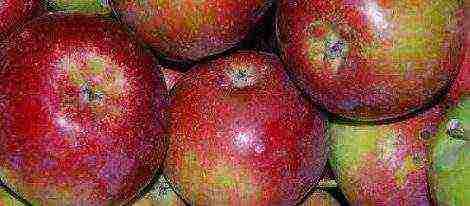Content
- 1 Stuttgarter Riesen
- 2 Sturon
- 3 Centurion
- 4 Red Baron
- 5 Carmen
- 6 Stardust
- 7 Shetana
- 8 Shallot
- 9 Bamberger
- 10 Hercules
- 11 Corrado
- 12 Cupid
- 13 Rumba
- 14 Alpha
- 15 Shakespeare
- 16 Senshui
- 17 Rosanna
- 18 Alvina
- 19 Golden domes
- 20 Odintsovets
- 21 Video "Planting onion sets"
- 22 Choosing onion sets
- 23 Description of varieties of onion sets
Many farmers are wondering which method of planting onions and which varieties are best to choose? Most of them consider the most effective method of planting by sowing with sets. Onions planted in this way require less maintenance: they do not need to be weeded often, because they grow rather quickly and displace weeds, in addition, its root system is designed in such a way that water for irrigation needs to be spent several times less. Such onions are more resistant to adverse weather conditions, less susceptible to diseases and the negative effects of various pests.
This article will review the most popular varieties of onion sets that a farmer can purchase for planting, and will give a brief description so that when choosing, you know exactly which one is right for you.
Stuttgarter Riesen
One of the most popular onion varieties among amateurs and professionals, bred by German breeders. The harvest of Stuttgarter Riesen is up to 8 kg per square meter, which ensures that it is in great demand in the market. He has large flat-round bulbs, according to the description a little resembling the onions of Strigunovsky onions, weighing 100-150 grams. Stuttgarter tastes quite spicy. The color of this vegetable ranges from yellow-brown to white. Stuttgarter is considered a versatile, well-kept variety that is not difficult to care for. You can buy it, like many other types of onion sets, through the website of the Leroy Merlin company or through the largest Russian-Dutch enterprise for the production of onion sets in Russia - Lukomorye.
Sturon
It is considered an improved version of the Stuttgarter Riesen variety, therefore it is very similar to the latter. It is quite spicy, so it can be used in the preparation of various dishes. Its bulbs are round in shape, and the scales are yellowish or brownish. Gives a relatively large yield, and problems with storage of this variety usually do not arise. For its unpretentiousness and productivity, most professionals choose it for planting.
Centurion
Medium early onion with an elongated medium-sized onion weighing from 100 to 150 grams. The husk that covers the plant is brown, while the middle is white. It has a medium-sharp taste and a high solids content. Because of this, the best way to store the Centurion is to place it in a cool, well-ventilated area. It has a high yield and is widely used in the preparation of various dishes.
Red Baron
Red Baron belongs to the annual onion plants. The red variety to which it belongs always produces a stable harvest. Red Baron's bulbs are large (reach a mass of 200 grams), slightly flattened, the scales are colored red. In appearance, it is similar to Danilovsky onions and Alvin's onions. It is not at all difficult to grow it, and if you plant it correctly, Red Baron will turn out to be a fruitful variety (3 kg of onions per square meter). Red Baron has wonderful taste, because unlike yellow onions, red is much sweeter. Thanks to this, Red Baron is actively used in the preparation of vegetable preparations.
Carmen
Carmen is a fairly easy-to-care red onion, the main characteristic of which is that it is capable of not spoiling for a long time. This variety ripens quite early and can provide the owner with a good harvest (with proper planting and proper care - 1.5–2 kg per square meter). Its bulb is rather small and light - only 60–80 grams, it is round-flat in shape, as if slightly flattened. It has a slightly pungent taste, but you can't call it sweet either, so many culinary specialists use Carmen raw, without performing any additional actions on it.
Stardust
Stardust is a white onion with rounded bulbs. We can say that Stardust is quite spicy, which makes it popular in salad dishes and adds a piquant touch to them. This variety is characterized by high yields, but for this you need to correctly follow the planting technology. When storing the Stardust variety, it should be borne in mind that he loves warmth, so he feels best at a temperature of 20 degrees. If the temperature is higher or lower, the shelf life is significantly reduced.
Shetana
Mid-season onion variety. Rounded bulbs have a mass of 75–95 grams, in addition, there is some external resemblance to the Strigunovsky onion. Shetana has a spicy taste, therefore it is good for preparing salads. The harvest gives a lot - as much as 4–5 kg per square meter. In addition, Shetana is not picky about the conditions of detention and is easily stored (at a temperature of 15–20 degrees), and has already managed to establish itself with its excellent ripeness. Therefore, many farmers choose this particular one for planting.
Shallot
Early ripe onions - after a month after planting, you can already cut them off. Its yield is up to 5 kg per square meter, in addition, it is rich in various vitamins that a person needs: carotene, thiamine, niacin and others. Its taste is not too spicy, in addition, Shallot is distinguished by high dietary and medicinal properties, which makes it very popular.
Bamberger
An onion variety that ripens fairly quickly. In appearance, the bulbs are round, and slightly elongated, and very small in weight - the largest specimens reach a weight of 80 grams. The bulbs are yellow in color and have a mild taste. In addition, the conditions under which this variety is stored are quite simple and can be grown on greens.
Bamberger is characterized by resistance to various kinds of diseases, which undoubtedly adds to its popularity.
Hercules
It is a hybrid with a very large and round bulb. There is some similarity with the varieties of onions - Strigunovsky, Odintsovo and Myachkovsky. The mass of Hercules reaches 160 grams, the husk is brownish, the juicy scales are white. It tastes quite spicy and can be stored for quite a long time. The yield of this variety is one of the highest - up to 8 kg per square meter.
Corrado
A relatively modern variety. It ripens in a short time after planting, one season (90 days) is enough for it. It tastes quite spicy, like most of its species. Corrado's bulb is round-flat, medium-sized, and even slightly golden in color. His weight is average - some specimens reach up to 120 grams. Diseases are practically not scary to him, and with proper care, his productivity is quite high.
Cupid
Mid-season variety. The scales of the bulb have a golden color, and the bulb itself reaches a mass of 120 grams. The plant is quite disease resistant and has a high yield. It is not difficult to store it, but it should be borne in mind that Cupido is not resistant to cold weather, so it would be better to find a warm room for it. This vegetable is especially prized for its medicinal properties.
Rumba
Mid-season variety. The bulb is small, neat, rounded, reminiscent of onions - Helenas.The average weight of one copy is 120 grams. The husk, like most representatives of this species, is colored brown, but the flesh is a pleasant white color. The yield of Rumba is high - 3-5 kg per square meter. It is noted that it tastes quite pungent, so it is often used in dressings and in preservation.
Alpha
It is considered a variety that ripens very quickly. Its bulb is rather small, round in shape and weighs a little (90-100 grams). One of the features of the species is its resistance to disease, which is why the use of agents such as, for example, phytosporin is not at all mandatory. In addition, they are dearly loved by chefs for their taste.
Shakespeare
Mid-season variety. It has a small bulb, round in shape. Shakespeare's scales are brownish. The pulp is quite juicy and firm, this variety has a semi-sharp taste. One of the advantages of Shakespeare over other varieties is that it is resistant to low temperatures, and therefore the risk of spoilage in winter is significantly reduced.
Senshui
Late ripening bow, loved by many farmers for its high resistance to the shooting process. The bulbs are round-flat, and the color in which they are painted ranges from yellow to brown. Senshui gives a large harvest, and culinary experts love this vegetable for its specific pungent taste.
Rosanna
Early ripe variety. The bulbs are of medium weight (in the range of 100-120 grams), and have a rounded shape. The color of dry scales is red, close to pink, and the juicy scales of this variety are white. It tastes like Myachkovsky onions - not too spicy and not too sweet. The yield is also very high - up to 3 kg per square meter.
Alvina
A mid-season high-yielding variety with a high content of sugars, selenium and quercetin. The bulb is purple in color, reaches a mass of 150 grams, and is outwardly similar both to representatives of onion (Danilovsky) and to some varieties of onion sets (Red Baron). Compared to other onion varieties, it tastes sweeter. It is characterized by good productivity and maturity.
Golden domes
Mid-season hybrid. A transverse elliptical bulb, weighing 75–85 grams, the color of the scales is yellowish. Golden Domes have a rather spicy taste and contain a lot of sugars. Stores well and is resistant to low temperatures.
Odintsovets
Mid-season variety. The bulbs are round-flat, not too large, weighing only 60–80 grams. The scales are yellowish, the onion itself has a semi-sharp taste. Odintsovo can be called universal, moreover, it is resistant to the transfer of cervical rot.
Video "Planting onion sets"
From this video you will learn about all the intricacies of planting onion sets.
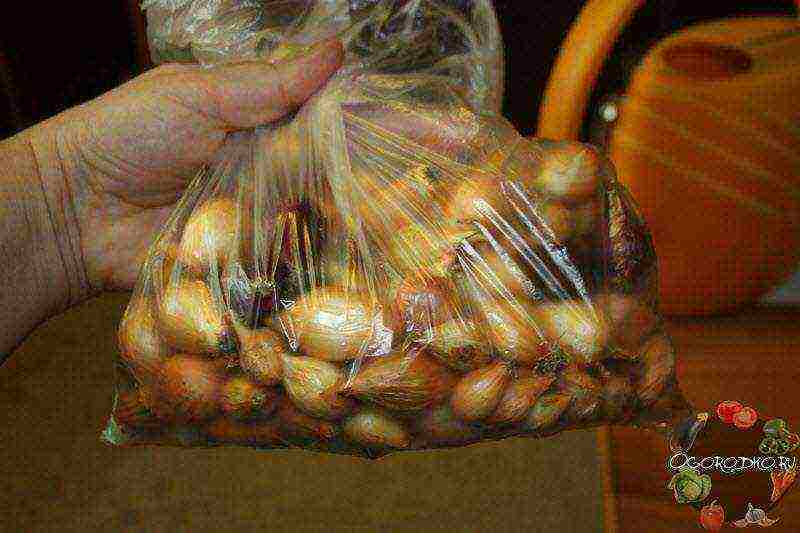
As a rule, it is the varieties of onion sets that determine the future harvest. You can plant a Dutch hybrid or a local hybrid, choose a sweet or spicy taste, red, white or yellow in color, so that it is better stored and can be planted before winter. There are quite a few criteria, so detailed characteristics will allow you to make the right choice ...
 in the package different varieties of onion sets - in the photo
in the package different varieties of onion sets - in the photo
The best varieties of onion sets - which ones?
With the arrival of spring, a hot season begins for gardeners, it is necessary to have time to plant all the vegetables on time. Onions are one of the first to be planted. For planting, sevok is most often used. But, before a novice gardener, the question of choosing varieties of onion sets will certainly arise, because there are a lot of them. And in order to make the right choice and buy the right bow, you need to get acquainted with the characteristics, so as not to miscalculate for sure!
When choosing varieties of onion sets, it is worth focusing on the ripening time, price, and yield. The best in all properties are considered:
Onion Sevok Sturon - the variety is characterized by early ripening, semi-sharp pleasant taste, such a single-nested bulb weighs 90–150 gr.Plants of the Sturon variety sprout together and give a wonderful harvest, but the cultivation of greens from it is not expected. The crop is harvested 1-2 weeks earlier than other varieties. Onions are resistant to various diseases, have a long shelf life
Onion sets Stuttgarter Riesen - when choosing varieties of onion sets for the northwest, attention should be paid to this well-known early maturing vegetable that does not have small bulbs. The bulbs have a dense structure, a flat round shape. One onion can weigh up to 300 grams. Onions of this type add spice to any dish and significantly replenish the supply of vitamin C in the body. It sprouts well, gives the desired yield and is perfectly stored. But, watering, loosening the soil and removing weeds has not been canceled, otherwise it will be difficult to grow large onions. Onion diseases, unfortunately, also affect this variety, in particular powdery mildew and putrefactive deposits
Onion Sevok Centurion Is a new selection onion. Centurion represents varieties of onion sets of an oblong shape, the onion can weigh 180 grams, it is stored for a long time, it tastes pungent. Centurion has 100% germination, high yield rates. Onions of this variety are rarely subject to disease.
Onion sets Hercules Is a mid-early hybrid with a large fruit that can weigh 160 grams. This plant is characterized by sharpness, long shelf life, and, moreover, there are practically no onion diseases.
Onion Sevok Red Baron - ripens early, winters well indoors, onions have a beautiful red-violet color. Red Baron replenishes sweet onion sevka, an indispensable vegetable in many salads and appetizers. Vegetable growers who preferred this onion always have a decent harvest.
It is worth noting that summer residents and gardeners successfully grow such varieties of onion sets as Shtur BS-20, Orion, Stardust, they all have their own flavor and are worthy of attention.
Winter varieties of onion sets
Many gardeners plant some specially selected varieties of onion sets in the fall, before winter, consider the most famous.
The Shakespeare onion variety is the most popular for winter sowing - it is represented by large round bulbs with snow-white juicy pulp and a semi-sharp taste. The variety differs from other onions with dark brown scales, which help to withstand frost in winter. Unpretentious and hardy, yields early harvest.
The winter onion Radar is not inferior to Shakespeare - its head weighs only 10 grams less, but if you take proper care of it, you can grow an onion weighing 300 grams. This variety has excellent taste, good germination, high yield. The onion is covered with golden yellow scales.
The planting material of a short-day form is represented by the Ellan variety - the bulbs are rounded, covered with golden scales, white sweetish flesh is characteristic of the seed. The advantage is quick maturation.
The Senshui variety is famous for its high yield and early ripening, which tolerates low temperatures well, does not shoot and is well stored. The yellow-brown bulb is of medium weight and size. This variety of onions is perfect for those who love a spicy taste.
Large bulbs containing vitamin C will delight the diligent gardener onions of the Baron variety - he is a champion in terms of ripening, most often he is chosen by professional vegetable growers to make a winter planting.
One hundred percent plants of the Centurion variety germinate without loss, it is characterized by early maturity and a pungent taste. For long-term storage and resistance to frost, gardeners like the Kip-Well variety, in addition, it is avoided by the disease and parasitic insects. The bulb is of medium weight and oblong.
German breeders presented a medium-late variety Bamberger, the heads of which have a taste of weak pungency, an elongated shape, and the scales are yellow. Of course, only some of the Dutch onion varieties that are suitable for winter planting are listed here.
How to Pick a Good Sevok - Tips
The place of purchase of the sevka can be a store, or you prefer to harvest it yourself. But, it is not enough to decide on the choice of the variety of onion sets, it is necessary to choose high-quality planting material, based on the following criteria:
- characteristic onion smell - should not smell of rot, dampness and mold
- dried splinters cannot be more than 1%
- there is a rustle of thoroughly dried onions
- shape and color correspond to the characteristics of the named variety
- planting material is dense with a uniform surface, there are no traces of infections, pests, putrefactive plaque
- there are no spots on the bulbs, the color is even
- sets without any mechanical scratches, dents, etc.
- no wet bulbs
- the diameter of the seed should not exceed 10 mm. Today the market often offers much larger bulbs, but it is not worth buying them, because there is a high probability of the formation of arrows
- planting material belongs to one fraction - a uniform sowing contributes to an increase in yield by 20%, obtaining the expected size
- the seller accurately named the variety, its characteristics and shelf life
A thorough selection of planting material and varieties of onion sets for Siberia, the Urals, the Moscow region and any other region is a guarantee of a high harvest. In order for the work to be crowned with success, the quality of the harvest was excellent, and it was convenient to work and there were few losses, plant onions not with seeds, but with sets! Good harvests to you!
There is not a single summer resident who would not grow onions in the beds. This culture has a wide variety of varieties and it is very difficult for a novice gardener to figure it out. Let's try in the article to consider the best varieties of onion sets.
I invite you to the group on "Country hobbies" the best varieties of onion sets
Choosing onion sets
What characteristics should be considered when choosing?
- Taste qualities of the variety: spicy, semi-spicy or sweet salad.
- The resistance of the species to humidity, the magnitude of the length of the day, the temperatures of your region.
- The size and shape of the bulbs.
Benefits of growing onion sets
- Possibility of obtaining a uniform and early harvest with proper onion care.
- This crop has a more powerful root system, which ensures a harvest in dry summers.
- The harvest depends little on the growth of weeds.
- Plants easily tolerate loosening.
Description of varieties of onion sets
The future harvest depends on the correct choice of the variety. Therefore, knowledge of the best varieties of onion sets will help to competently approach the choice of culture.
yellow onion
Yellow varieties
Sturon among breeders it is considered the best. It has an early ripening, pleasant semi-pungent taste. The variety is single-nest, reaches a weight of 90-150 g. It sprouts well, has a stable yield, is well stored and is resistant to many diseases. It ripens 8-12 days earlier than other species. Recommended for cultivation in northern latitudes.
Arzamas variety time-tested. It ripens in 3.5 months and is perfectly stored. The bulbs grow from 40 to 85 g.
Sevok Buran belongs to late varieties and is mainly grown in two years. Its bulbs are dense, even and large, pungent in taste, perfectly stored. The harvest is fairly stable.
Stuttgarter Riesen - one of the earliest varieties, has proven itself well in our country. The bulbs have a pungent taste, grow to medium and even large sizes from 50 to 150 g. Some specimens reach 250-300 g. The variety has a stable yield and excellent keeping quality (up to 6 months). When growing, requires weeding, loosening and watering. The disadvantage is low resistance to cervical rot and powdery mildew.
Centurion variety bred on the basis of the Stuttgarter Riesen. The characteristics of the variety are improved: keeping quality has been increased to 8 months, the shape of the bulbs is elongated, their weight is 110-150 g (maximum up to 180 g), the yield is stable and high, germination reaches 100% under favorable conditions, the taste is semi-sharp and pungent, resistant to shooting. Increased resistance of the variety to a large number of diseases.
Hercules - a hybrid variety of medium ripening, spicy taste. It gives the largest broad-elliptical bulbs about 150-160 g. The variety has a high yield, excellent storage, resistant to pink and bottom rot, fusarium onion.
Siberian annual sevok ripens in 2.5 months. Flat or round yellow bulbs can reach 200 g. If seeds are sown, it will take about 100 days to ripen. This variety keeps well and is resistant to shooting.
Exibition medium-late type, fruitful, cold-resistant, can grow sweetish juicy giant bulbs up to 1 kg. Differs in stable productivity in many climatic zones, and disease resistance.
description of varieties of onion sets
Red or purple varieties
Red Baron early onions have a rounded onion weighing 25-150 g with a pleasant semi-pungent taste. It is perfectly stored, has a high stable yield. Due to its pleasant taste, it is successfully used in the preparation of salads. When growing, requires loosening, weeding and regular watering. Can be propagated by seeds, seedlings.
Black Prince has a mid-season ripening period, flatish rounded bulbs can reach a mass of up to 100 g. The yield is up to 50 kg / ha. The purpose is universal, the color is purple.
Carmen MC a new early variety of red-violet color, slightly pungent taste. Flat-rounded bulbs grow up to 100-120 g. Usually grown in two years, 2-3 bulbs grow in the nest. Good keeping quality. The bulbs are rich in vitamin C. The species reproduces by seeds, seedlings and seedlings.
Moldavian view medium ripeness and ripens in 3.5 months. Purple bulbs are large, individual specimens reach up to 200 g.
These varieties also include: Retro, Campillo, Yukont, Mars, Hermes.
white onion
White varieties
Stardust It is a mid-early ripening period with a pleasant semi-pungent taste. The bulbs are even, large in size, weighing 30-50 g, excellent storage. You can propagate by sevkom and seeds. The yield of the variety reaches 3-4.5 kg / m2.
The variety belongs to the snow-white bulbs: Snowball, Albenka, White Globe, Divino, Sterling.
Of course, it is impossible to list all the best varieties of onion sets... For a stable harvest, the main thing is to choose the right variety suitable for your climatic zone and soil, to ensure proper onion planting and care.
If you find an error, please select a piece of text and press Ctrl + Enter.
Share with your friends on social networks!
The site is non-commercial, it is developed on the personal funds of the author and your donations. You can help!
(Even a small amount, you can enter any amount) (by card, from a cell phone, Yandex money - select the one you need)
Thank you!
I invite you to the group for "Country Hobbies" Everything about country life: cottage, garden, vegetable garden, flowers, rest, fishing, hunting, tourism, nature
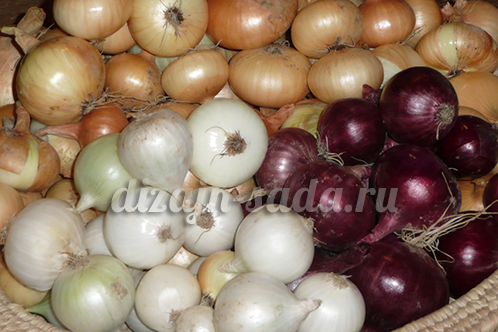
Onion varieties for storage: description, reviews, photos
Onion Stuttgarter rizen, description - a variety of German selection, which has become by right the most popular in the world among varieties of onions. Early maturing: from sowing to ripening 120 days when grown from seeds and 60-70 days from seedlings. The bulb is flat-rounded, large, weighs 120-150 grams. The taste is spicy. It is appreciated for its yield (5 kg / m2 with minimal maintenance). Perfect evenness of the bulbs, excellent keeping quality. Resistant to downy mildew (downy mildew). Unpretentious and very flexible variety.
Bow Sturon and Centurion
New selection of the Stuttgarter rizen variety. Centurion is a heterotic hybrid (F1). Both of these varieties produce the highest quality, well-stored bulbs. The shape of the Sturon bulbs is perfectly round; the Centurion forms a somewhat elongated bulb. Round and elongated onions are very convenient for cutting, and the housewives have already appreciated this. These varieties have a smaller bottom and a narrower neck than Stuttgarter rizen. The small bottom reduces waste when cutting the onions.A narrower neck dries out faster, which means that the likelihood of pathogens getting to the bulb decreases. A higher yield of these onions was noted in comparison with the well-known Stuttgarter rizen variety.
Onion Orion, variety description
Exclusive grade of the English firm "Johnson". Orion is the result of many years of work to improve other breeding types. The cultivar gives leveled production of perfectly rounded, large (up to 150-200 grams) bulbs. Early ripening periods allow this onion to fully ripen even in Siberian conditions, which creates good preconditions for long-term storage. Many gardeners prefer this variety to everyone else.
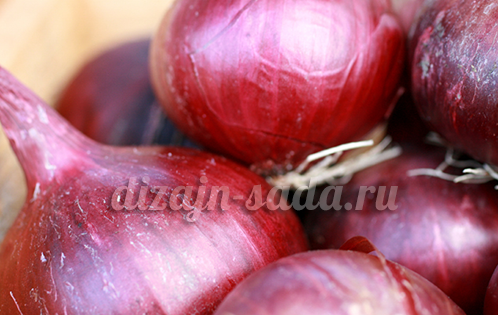
Popular varieties of red onions: a description of Bombay and Brunswick onions
Dutch varieties of red salad onions, used fresh in salads, preparations, for making marinades. The feathers and bulbs of these varieties are very juicy and tasty, mild, rich in vitamins and phytoncides. Large farms grow these onions for greens, which are in greater demand than yellow onions.
Bombay - mid-season variety of onions. The bulbs are flat, dense, large. The color of dry scales is dark red, juicy - light lilac. The taste is semi-sharp, the keeping quality of the variety is good.
The onion variety has long been loved and popular. Brunswick... This is an early maturing variety that does well in annual crops. Growing it through seedlings, in one summer you can get decent bulbs, up to 6 cm in diameter. They are flat-round, multi-nested in shape, the color of dry scales is bright purple, juicy - pink. Keeps well too.
Bow Carmen
Mid-season variety of onions. From germination to harvesting 120-130 days. The bulbs are beautiful, dark red with a purple tint, weighing 50-70 grams. The taste is semi-sharp. Differs in 100% ripening and good keeping quality. It is grown from both seedlings and seeds.
Red Baron onion
An early onion variety, the period from seed germination to technical maturity is 92-95 days. The bulbs are flat-rounded, weighing 18-24 grams. The taste is semi-sharp. Differs in a high content of ascorbic acid.
Advantages of the variety: stable yield, excellent ripening after ripening. To obtain larger bulbs, this variety is grown through seedlings.
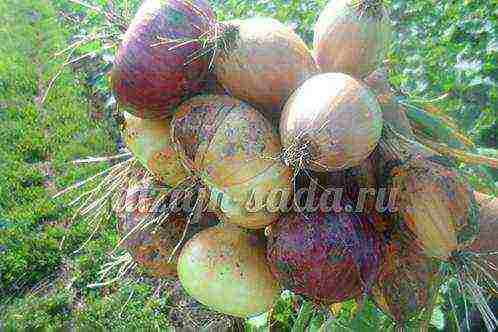
Onions of the Stuttgarten variety Riesen, Red Baron, Lyubchik, Victoria.
Varieties of large onions: description, photos, reviews Onion Globo
Mid-season variety, one of the largest among salad varieties. The bulb is round, light yellow, weighing up to 1 kg, very juicy, sweet taste. From seed to turnip, it is grown in 1 season only through seedlings.
Planting pattern of seeding: 7 x 35 cm.To obtain seeding from nigella, the seeding pattern is continuous: 1.5 x 1.5 cm.
Bow Exhibition
Medium late variety, forms a huge bulb weighing 500-800 grams, sweet taste without bitterness. The shelf life of the crop is short, only 3-4 months. Grown only through seedlings.
Texas yellow onion
Popular Dutch variety. All Siberian gardeners are delighted with this onion. It grows easily and quickly, forms a good head in one season. Quite large bulbs have a straw-yellow color, dense and mild flesh. The variety is resistant to pink root rot.
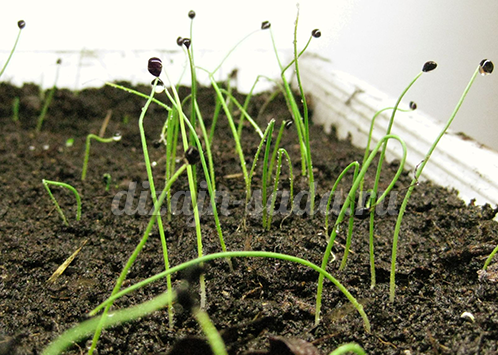
Growing onions from seeds
Before sowing, onion seeds are soaked for 2-3 hours in water. Then they are kept for 3-4 days in a damp cloth. Be sure to disinfect the seeds in a dark solution of potassium permanganate (1 g per 1 liter of water) for 8 hours at a temperature of 40 ° C.
To get giant bulbs, seedlings are grown. To do this, in mid-March, seeds are sown in boxes filled with a soil mixture of humus, sod land and mullein (9: 10: 1) with a neutral reaction. Sowing is sprinkled with a loose soil mixture through a sieve, then rolled. Onion shoots appear 7-12 days after sowing.
Maintain the temperature when growing seedlings: 20-22 ° C until germination, then 17-20 ° C during the day, 10-14 ° C at night. Drizzle with warm water.
Frequent airing prevents the seedlings from stretching out unnecessarily.
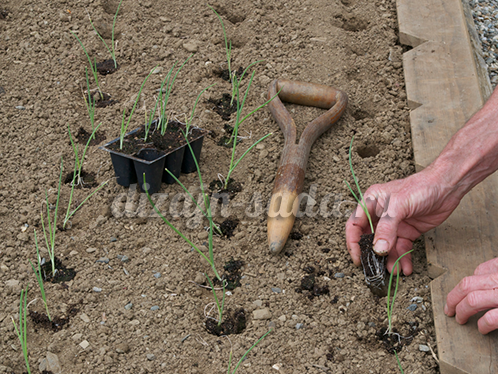
They are planted in a permanent place after two months, usually in mid-May. Immediately before planting, the seedlings are hardened for 2 days. Landings are placed in an open, unshaded place. The scheme for planting seedlings in open ground 20 x 30 cm.
Fresh manure is harmful. Planting is placed in the place where manure was introduced 2-3 years ago, since the plant forms a large leaf mass and loose bulbs unsuitable for storage using fresh manure. A month after planting the seedlings, and then, if necessary, the site is loosened and weeded. After the formation of the bulbs, the soil is raked away so that only the bottom is in the soil. In this case, the bulbs ripen faster and are better stored in the future.
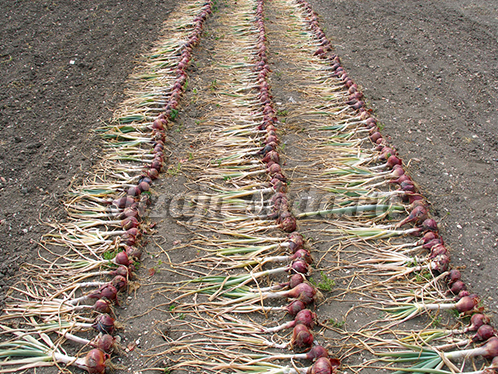
Harvesting turnip onions
In August, as soon as the feather begins to lay down, to accelerate the ripening of the bulbs, it is rolled. Lodging of leaves is the first sign of ripening. Simultaneously with the lodging and yellowing of the leaves, the roots die off at the bottom. Thus, the bow shows us that it has stopped growing. Onions are harvested closer to mid-August. The most important thing is not to be late in harvesting large and lying bulbs, since after the leaves have completely dried out, if the soil is wet, roots begin to grow again, which reduces their keeping quality. Onions are harvested only in dry weather, it is good if there is a breeze that dries it outdoors. Drying the onions in the sun helps to decontaminate the bulbs and store them better. Then the onions are dried in the attic or in the shed for a month. During this time, the neck becomes thin and dry. Dried onions are peeled from dry scales and placed for long-term storage.
Growing onions through seedlings
Some people sow Dutch onion seeds in the early spring directly in the open field and get good results. But if you want to get the maximum yield in a small area, and such that it is worthy of its name Exhibition, you cannot do without seedlings. Many, after reading these lines, will immediately remember with sadness their windowsills, lined with seedlings of tomatoes and peppers. And then there's the bow! But let us reassure you in advance: from 0.4 g, or 100 seeds, more than 11 kg of onions will grow. Use 1 liter juice boxes to plant them on seedlings. They take up little space, are compactly placed on the windowsill, and the seedlings can be easily removed from them without injuring the roots.
Sowing is best in mid-March. Some vegetable growers recommend doing this in February, of course, if it is possible to regulate the temperature and light conditions (cool at night, illuminate in the morning and evening). Such terms are justified, as they will provide the output of better quality seedlings. But in an ordinary apartment with an early planting, the seedlings will stretch out and grow heavily.
Sowing Dutch onion seeds is a pleasure, as they are treated with fungicides and painted in bright colors, which allows you to control the planting density. It is enough to pour the seeds from the bag onto the prepared moistened soil and use a match to distribute them evenly over the entire area at a distance of about 0.5 cm. However, the seeds of the Globo variety are not treated with anything. In order not to thicken their planting, a layer of snow is placed on the soil. On a white background, the nigella is clearly visible. By the way, this method is very convenient for sowing very small dark seeds, for example, petunias, snapdragons, celery and other crops. When the snow melts, the seeds are pressed into the soil gradually and evenly provided with moisture, which contributes to their more friendly germination. Cover the onion seeds with a layer of soil no more than 1 cm, place the box in a plastic bag and place it under the battery. After a few days, the first green "loops" appear. This is a signal that it is time to expose the container to the light.
Top dressing onions
Water the seedlings sparingly, as the soil dries up. The need for feeding is determined based on the quality of the substrate.Use well-rotted manure or compost sifted through a metal mesh (0.5 cm mesh) or compost with the addition of ash and sand. A sufficient amount of nitrogen, potassium and trace elements in its basis makes it possible to do practically without additional feeding. Some phosphorus deficiency is compensated for by one-time watering with ammophos solution.
To prevent the seedlings from pulling out, if possible, spray it with an epin solution (this applies more to tomatoes). Many summer residents, when planting seedlings, make a gross mistake, strongly compressing the ground around the planted plants. At the same time, pampered stems and fragile roots are often injured, and oxygen access to them is also blocked. It is better to make a depression with a small hoe, put the seedlings there, gently scoop up the soil to the roots and water. In this case, the soil itself is evenly compacted around the seedlings.
Despite the fact that the feather of the onion grows powerful and thick, it is often not worth cutting it off for consumption. After all, it is due to it that the onion grows, and the starting conditions for nigella and sevka are incommensurable. And in the shortest time it is necessary to achieve maximum results. The perennial leek and the annual Parade onion are grown on the green feather, which gives leaves until late autumn. Onions from seeds are "pinched" only occasionally, its greens are juicy, sweetish.
During the growing season, it is useful to sprinkle all onion plants with ashes a couple of times. In addition to potassium nutrition and a full range of trace elements, this will to some extent save plantings from fungal diseases. The rest of the dressing is carried out according to the usual scheme, familiar to every gardener. The main thing is to maintain the optimal distance between plants (5-6 cm) in a row when planting seedlings, although, looking at the thin borings, you just want to plant denser. But this is not necessary, because a rapidly growing bulb needs a large area of nutrition.
Grow annuals only through seedlings. Moreover, it is recommended to do thickened crops so that the bylochki support each other and do not fall, and when they are 10-15 cm, then cut them in half so that they go not upward, but in breadth. When planting, cut the greens again by 1/3 and the roots by 1/3. That's the whole trick.
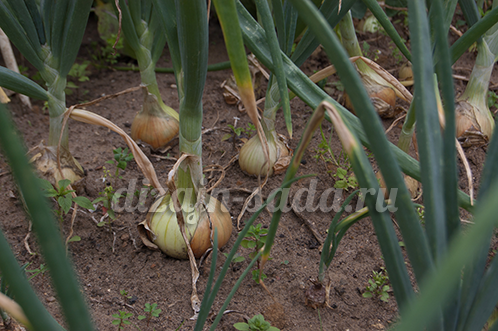
With any method of growing onions during the ripening period, when the feather is still green, it is necessary to create conditions so that as much nutrients as possible pass into the bulb, and at the same time to prevent the formation of new roots and regrowth, which will further negatively affect preservation. To prevent this from happening, in rainy weather, you should cover the plantings with pieces of old film, and then you do not need to cut the roots or "trample" the feather, as amateur vegetable growers advise. After harvesting, marketable onions are placed in plywood fruit crates, which ensure good air exchange.
You will have enough of your onions almost until the next harvest. The advantage of this method is obvious - the cost of packing even the most expensive seeds is incomparable with the price of a kilogram of seed. Under no circumstances will your onion “go to the arrow”, and you will get the opportunity to grow exactly the variety that you like best. After all, the assortment of nigella is much wider than the set.
source
